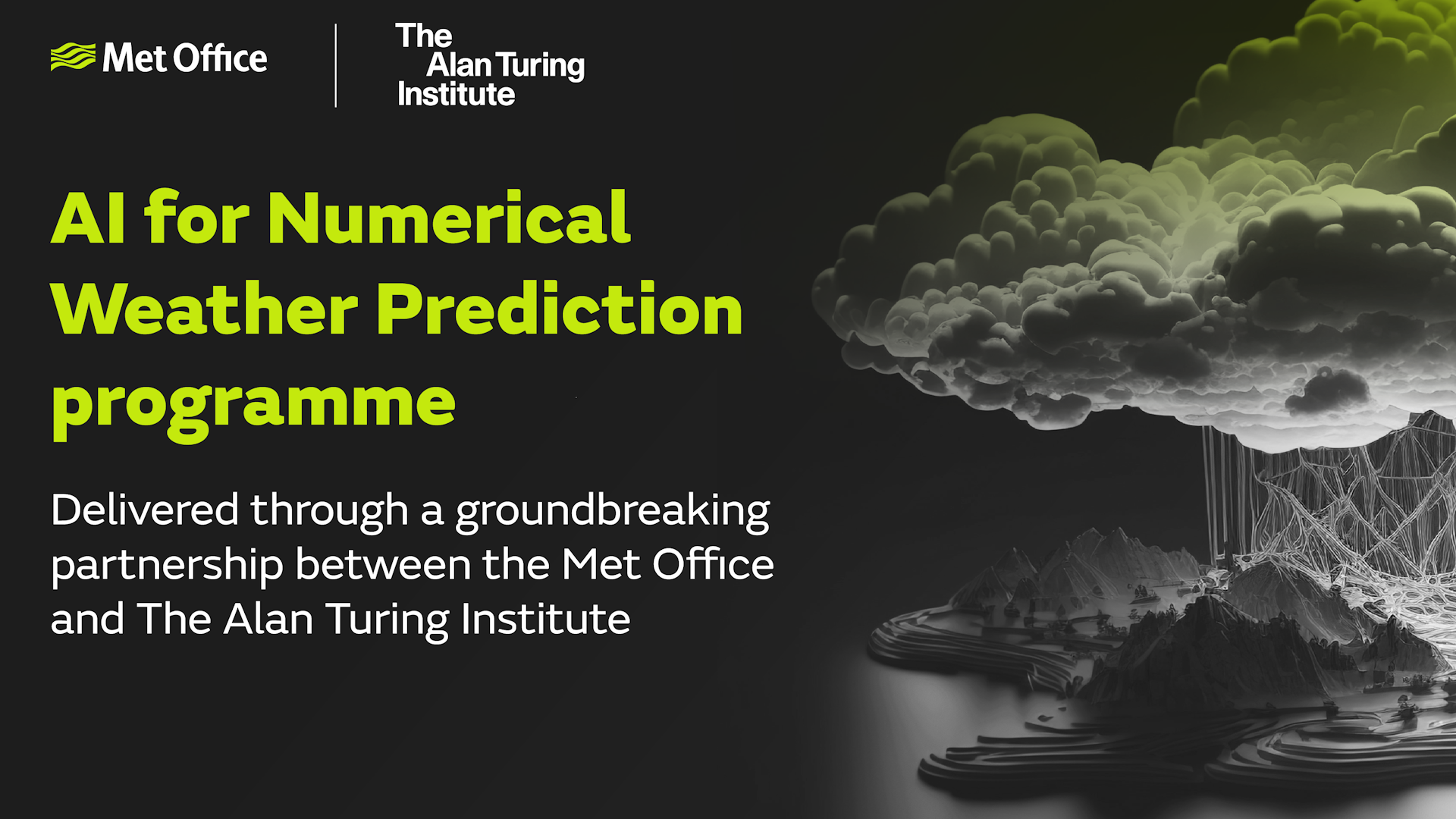Artificial Intelligence for Numerical Weather Prediction
Artificial Intelligence (AI) is rapidly advancing and being utilised widely across society, fundamentally changing the way we live and work.
As the world’s fastest-growing deep technology, AI is rewriting the rules of entire industries – including how we forecast the weather.
Since the start of 2022, there have been significant advances in the use of Machine Learning (ML) models to forecast the weather, such as Huawei’s Pangu-Weather, Google’s GraphCast and NVIDIA’s FourCastNet. These data-driven models are an innovative complement to traditional physics-based Numerical Weather Prediction (NWP). ML weather models are already competitive with the current generation of NWP models and, for some applications, have the potential to exceed their performance while offering significant financial savings. AI brings a new paradigm in weather forecasting.
Exploiting the opportunities of AI
As the UK’s national meteorological service, the Met Office provides weather and climate-related services across government and via the Public Weather Service (PWS). This is to help protect lives, property and infrastructure from weather impacts, and to contribute to UK economic growth through the effective use of weather information. To ensure the UK retains its global leadership position in weather and climate capability, we are keen to exploit the potential of technological and scientific breakthroughs – including how the opportunities afforded by advances in AI and ML complement the forecasting excellence being achieved by physics-based modelling.
While we already use ML approaches at several points in the weather production schedule, we are convinced the use of AI in weather forecasting has the potential to fundamentally transform operational weather data. Machine Learning models are exceptionally fast and cost significantly less than physics-based simulators, opening a range of development opportunities. These include:
- greater ensemble sizes and higher resolution forecasts supporting a range of benefits including better prediction of extreme weather events
- greater breadth of user-focused services
- greater availability of timely forecasts tailored to specific user needs
To realise this opportunity, in 2023 the Met Office launched the AI for Numerical Weather Prediction (AI4NWP) programme to draw together our AI projects and drive forward development for data-driven approaches to weather forecasting.

Collaborating with The Alan Turing Institute
In October 2023 we announced a groundbreaking new partnership with The Alan Turing Institute, the UK's national institute for data science and artificial intelligence. The partnership will enable the AI4NWP programme to accelerate exploring the use of ML to emulate the weather and produce a seven-day weather forecast covering both regional and global scale.
The Alan Turing Institute plays a pivotal role in working with the UK community to harness data science and AI technologies for the public good. As such, it is perfectly positioned to help shape and deliver the programme. With a remit of national AI and data science leadership, the Institute supports the UK’s ambition to be a global leader and is experienced at interdisciplinary approach at scale, mirroring closely the ambitions and needs of the programme.
Collaborating on the AI4NWP programme demonstrates our shared commitment to keeping the UK at the forefront of what can be achieved with transformative technology. By delivering a new paradigm for weather forecasting, the partnership illustrates the societal value of AI, high performance computers, data and domain expertise.
The first year
In a blog (published September 2024) Prof Kirstine Dale, Chief AI Officer & Principal Fellow for Data Science at the Met Office and Dr Scott Hosking, Co-director for Natural Environment, Turing Research & Innovation Cluster in Digital Twins (TRIC-DT) at the Alan Turing Institute share the scientific progress and mutual benefits realised as a result of this innovative and cross disciplinary partnership, which pushes the boundaries of AI and machine learning to enhance the accuracy and efficiency of weather predictions.
This animation shows the performance of a new Machine Learning model for weather prediction – FastNet developed by the Met Office and The Turing Institute. This animation compares ERA5 (which uses a blend of observations and Numerical Weather Prediction model to produce the best estimate of historical reality) with a prediction from the FastNet machine learning model for weather prediction. The results are encouraging and demonstrates the next step in weather prediction and the UK’s commitment to remain at the cutting-edge of weather forecasting.


